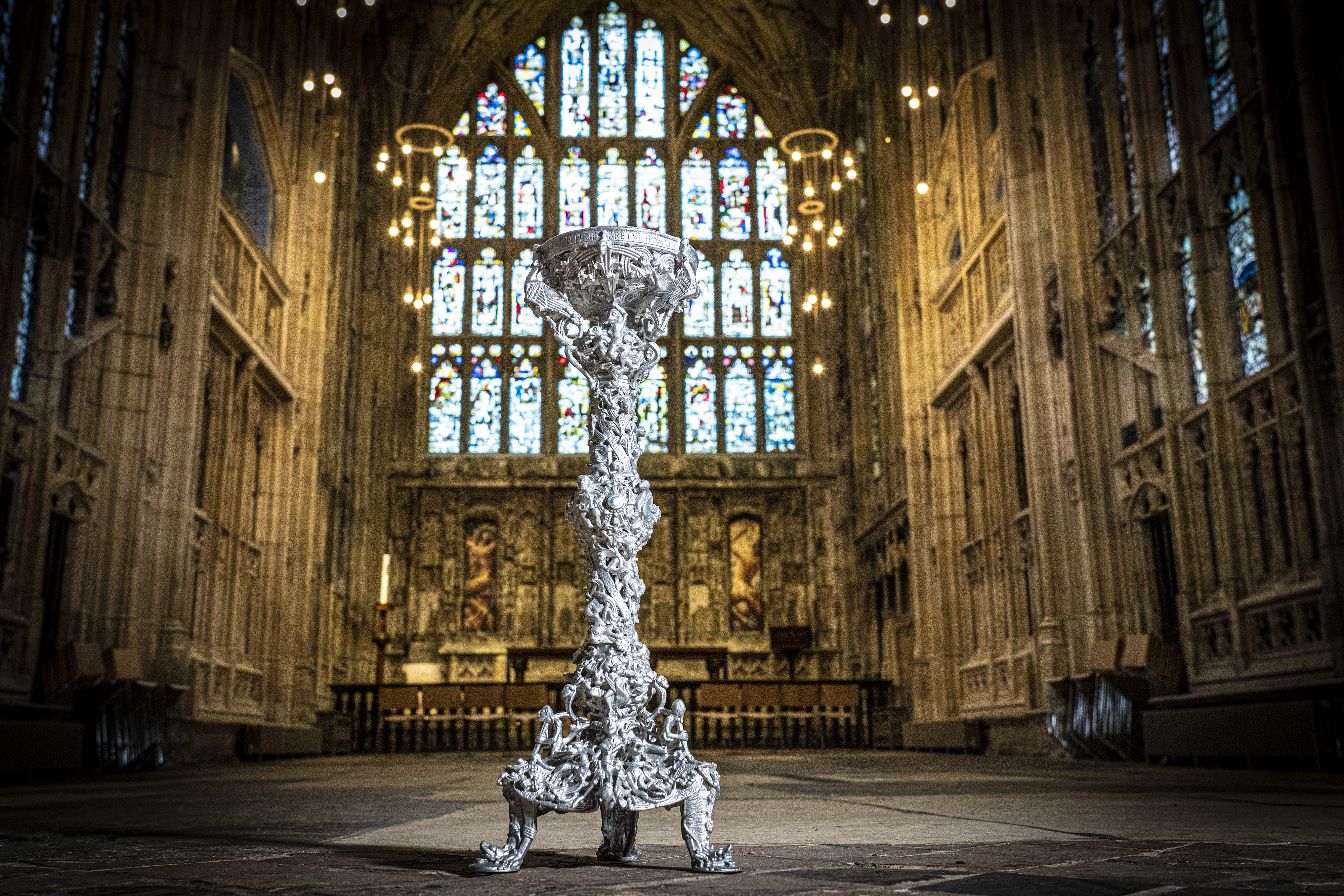
Additive manufacturing (AM) company Renishaw has recreated a 12th century metal candlestick to be installed in a UK cathedral.
The company says that it is working with Gloucester Cathedral and the Victoria and Albert (V&A) Museum, London, to recreate the Gloucester Candlestick using metal AM technology. The original candlestick is on show at the V&A Museum, while the Renishaw manufactured replica will be displayed and used at Gloucester Cathedral, Renishaw said.
The company used a 3D laser scanner was used to capture the geometry of the original candlestick, which consists of densely-entwined foliage and fantastic creatures, and then recreated the candlestick by building it up layer-by-layer from aluminum powder using one of its RenAM 500Q multi-laser additive manufacturing (AM) systems.
‘Because of the Gloucester Candlestick's complexity, there is no other way to reproduce it than additive manufacturing,’ said Paul Govan, customer training manager at Renishaw. ‘The candlestick is composed of three distinct sections, each with intricate openwork decoration and a patina that has accumulated over 900 years. Renishaw used 3D scans of the original candlestick to reverse engineer each aspect of the design to recreate this historic masterpiece in all its original glory.’
This story uses material from Renishaw, with editorial changes made by Materials Today. The views expressed in this article do not necessarily represent those of Elsevier.






